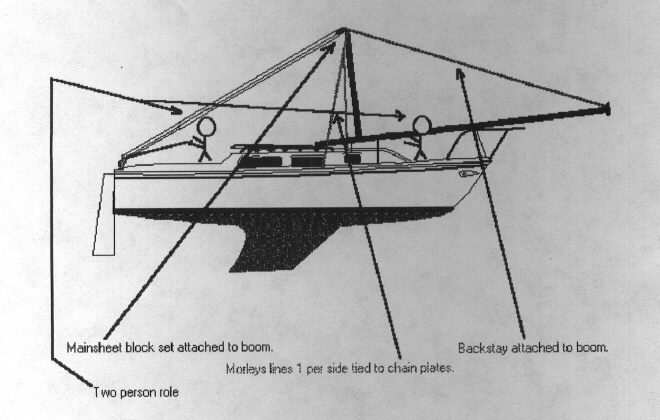| SJ23 Tech Tip F19, (Issued 1999-01-03) Tom Churchill | |||||
|
Step the Mast Forward - to pass under a bridge. |
|||||
NOTE - This technique applies only to an SJ23 equipped with hanked on jib.
|
|||||
TOM'S
MAST STEPPING PROCEDURE
- (Assume the mast is standing and you are going to take
it down as in the illustration below).
Reverse the above procedure to raise the mast. Aloha
from Tom, Barb &
________________________________________
The convenience of stepping the mast forward is that you can use the installed boom for mechanical advantage, saving time and effort. You also have an additional safety factor in that the crew is not in the drop zone of the mast. This might also be the fastest and most convenient method of lowering the mast for a fixed bridge! I suggest, resting the mast on a (2X4)" placed cross the compression posts of the pulpit. If the (2x4)" is equipped with a couple of blocks on top, they will provide lateral support so wave action doesn't slide the mast sideways and twist the tabernacle loose. Another plus is that the cockpit is clear to handle the boat while motoring. NOTE 1: Lowering the mast over the bow can be done safely ONLY IF the boat has a hanked on jib. Many roller furling manufacturers will void their warranty if the furler is lowered over the bow, citing damage. Most furler manufacturers recommend you lower the mast over the transom to keep the foil straight. The risk of damaging the foil by lowering over the bow is too great. NOTE 2: The
side support lines for the mast are called Morley Lines. They come in
various configurations to suit a particular mast. Regardless of the
configuration, their purpose is to keep the mast centered over the hull
while stepping the mast. To do so, the lines must remain snug for the
entire arc of the mast to keep the boom
centered over the mast, thereby controlling the mast. While it would be
ideal that the tie down points for the Morley Lines are at the same
pivot point as the mast step, this is not the case for a SJ23. Therefore, use a
bridle to artificially raise the pivot point to that of the mast as
described in Tech Tip f18.
|
|||||
|
Return to Tech Tip Index. . . . . . . . . . . . . . . Have a Question? |
|||||
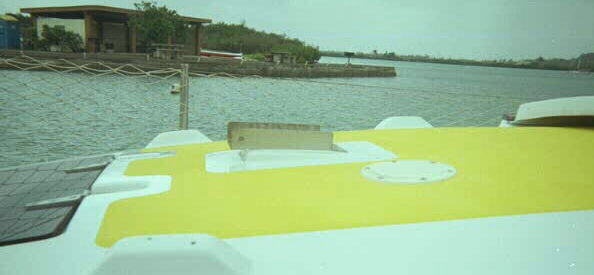
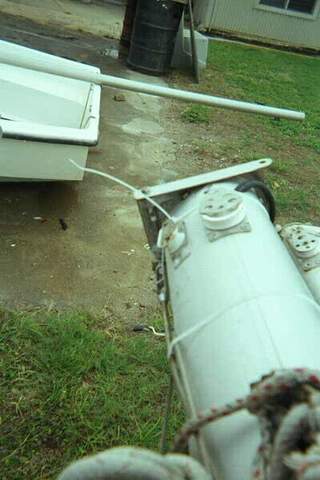
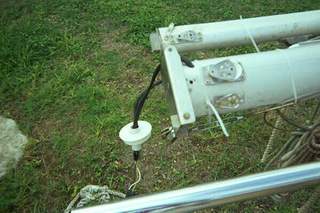
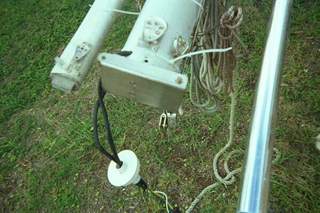
 aboard Malia.
aboard Malia.